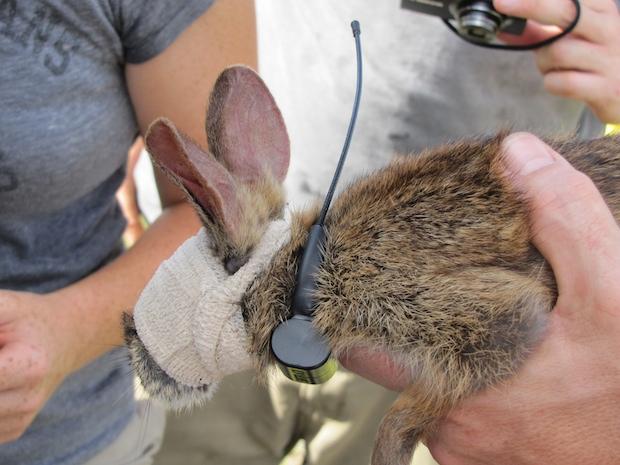Scientists and wildlife managers face daunting challenges with how to handle an invasive reptile in the Everglades National Park, Florida. Believed to number up to 100,000, the Burmese python, a native of southern Asia, is said to have made a smorgasbord of the 1.5 million-acre park and set in motion grave dangers to the already delicate ecosystem. Flora and fauna teeter on the brink of collapse, officials claim. The ordeal makes a ripe story arc for a sci-fi thriller. The only difference is that this is the real deal.
The pythons, which can reach 18 feet in length, are established and breeding, so eradication is not the mission, says Robert Reed, chief of the invasive species branch at the U.S. Geological Survey (USGS). He tells the Epoch Times that no system has yet been devised to control the pythons, however. Major obstacles are the domains they occupy in the Everglades being inaccessible to humans, and the ambient camouflage. “Pythons are very difficult to detect in the marsh, even when they’re right in front of you,” he says.
The first Burmese python was discovered in the Florida wetlands in 1979. Its beginnings are traced to irresponsible pet owners whose novelty purchase wore off. So the Florida wilderness became a dumping ground.
The initial hope that alligators could keep these voracious predators in check was not to be. Face-offs are “an even draw,” stated Frank Mazzoti, a wildlife professor at the University of Florida to the Associated Press.
The pressure is on to develop solutions. Traps filled with attractants have been useless. In 2013, the Florida Fish and Wildlife Conservation Commission (FWC) sponsored a month-long “Python Challenge,” which drew 800 hunters but yielded just 86 kills.
The FWC sponsors “Python Patrol,” training for lay people to wrangle the snakes. After all, pythons have spilled into residential swimming pools, roads, and backyards.
Dave Barker, co-founder of Vida Preciosa International (VPI), a Texas-based company that studies the captive propagation of snakes, has a divergent take on the Florida bramble: The number of Burmese pythons is “exaggerated.” Ninety percent died off in winter cold snaps, he says.
Observers wonder if the ones that survived, such as by crawling into mammal burrows, exemplify the evolutionary survival premise of natural selection.
Counter to widespread speculation, Barker adds, “There really is no objective hard data to indicate that Burmese pythons in the Everglades have done any ecological damage of any sort.”
The Burmese pythons have a proclivity to reproduce at an astonishing rate. Females can carry 100 eggs, though a clutch of 35 is normal. Unlike other types of snakes, python mothers stay with its eggs, nullifying chances a raccoon or opossum will make a grab. Whether the Burmese python, described as “gentle,” interbreeds with the bigger, aggressive and “ill-tempered” African rock python, also found in the marsh, is not known.
USGS’s Reed cites diminished numbers of the once-abundant marsh rabbit, on which other predatory species like the Florida panther depend for food, attributing the decline to the Burmese python. Stomach contents of captured pythons reveal a spectrum of mammals, from deer to bobcat, which haven’t had time to cope with these reptilian hunters.
Barker argues that the debate centers on monetary factors. The Burmese python is now on the injurious species provision in the Lacey Act, which specifically bans commerce in pythons. “Fear mongering for federal funds,” says Barker in an article “On Burmese Pythons in the Everglades,” published in VPI Library. “After all, the poor old swamp has been invaded by pythons, and it won’t be long before pythons are in every Miami alleyway [and] Florida pythons were going to spread all the way west to California and north to Washington, D.C.”
It is a fact that pythons are established and breeding in the Florida Panhandle. One was shot by hunters in Georgia’s Okefenokee Swamp. Experiments at Davidson College in North Carolina show that the potential python range to temperate climate zones not to be so far-fetched. USGS diagramed an inhabitable swath across the Sun Belt of the United States, all the way to Northern California.
“Migration to the western states is unlikely,” though, suggests Valerie Cook Fletcher, a scientist in the invasive species program at the California Department of Fish and Wildlife.
Conversely, inhabitation is possible though not probable. While the subtropical climate of Florida reproduces the snake’s natural environment, California mirrors its terrain in higher elevations in Asia. It is found at 3,900 feet, according to VPI’s Barker, including in the Himalayan foothills.
The snake would not thrive in California due to population density. “There is no place for it to hide,” observes Fletcher, who identifies cameo appearances of the python—abandoned by its owner or escaped—in places like car engine compartments and behind shrubs. USGS reports the discovery of a shed Burmese python skin in “extreme Southern California.”
Unpopulated areas like the desert do not present an alternative for inhabitation, Fletcher claims. Temperature extremes would be deadly. The absence of foliage and water also pose a detriment to survival.
Fletcher, like others, views the invasive occurrence in Florida as a national problem. Notably, the balance of nature is universally intertwined.
Timothy Wahl’s experience in business, education, the sciences, and the arts gives him a unique platform on a spectrum of subjects.





